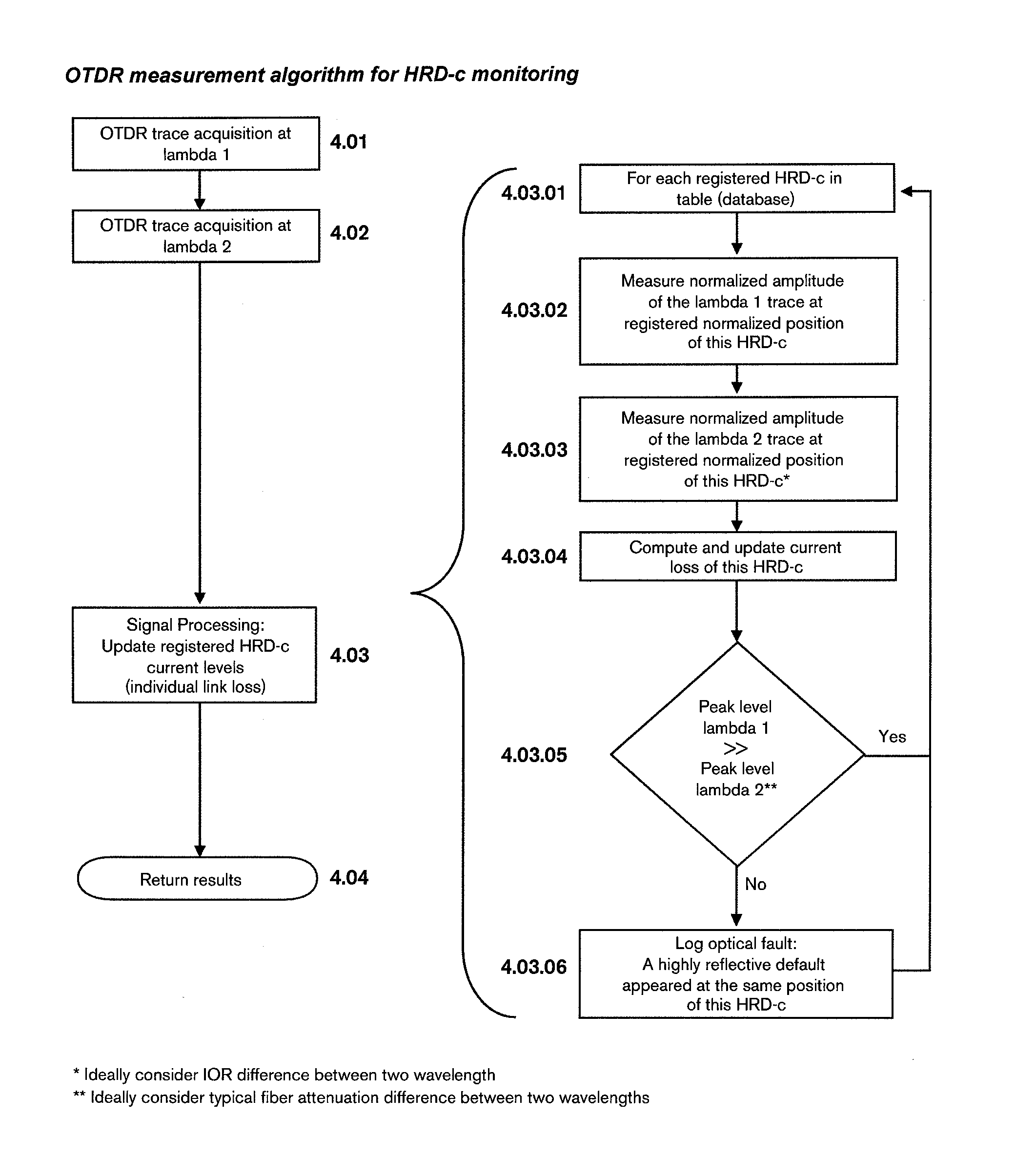Method and Apparatus for Deriving Parameters of Optical Paths in Optical Networks Using Two-wavelength OTDR and a Wavelength-Dependent Reflective Element
- Summary
- Abstract
- Description
- Claims
- Application Information
AI Technical Summary
Benefits of technology
Problems solved by technology
Method used
Image
Examples
Embodiment Construction
[0045]FIG. 1 illustrates a portion 10 of an optical network, specifically a Passive Optical Network (PON), comprising multiple “drop” fibers 12 connected to an Optical Line Terminal (OLT) 14 in a central office 16. For purposes of illustration, FIG. 1 illustrates a network having only sixty-four drop fibers 121 to 1264, in eight groups of eight. Each group of eight drop fibers is connected by a respective one of eight 1×8 couplers C2-1 to C2-8 and a corresponding one of eight distribution fibers F2-1 to F2-8, in a distribution cable DC, to a further 1×8 coupler C1 which is connected to the OLT 14 by way of a single (common) fiber F1 and a wavelength-division multiplexer (WDM) 18. This WDM 18 substantially separates, onto distinct fibers, light at a wavelength corresponding to the normal operating wavelengths range of the PON (e.g. 1310 nm, 1490 nm, 1550 nm) from light propagating in the same fiber corresponding to U-band wavelengths range of the OTDR (e.g. 1625-1675 nm), or, inverse...
PUM
 Login to View More
Login to View More Abstract
Description
Claims
Application Information
 Login to View More
Login to View More - R&D
- Intellectual Property
- Life Sciences
- Materials
- Tech Scout
- Unparalleled Data Quality
- Higher Quality Content
- 60% Fewer Hallucinations
Browse by: Latest US Patents, China's latest patents, Technical Efficacy Thesaurus, Application Domain, Technology Topic, Popular Technical Reports.
© 2025 PatSnap. All rights reserved.Legal|Privacy policy|Modern Slavery Act Transparency Statement|Sitemap|About US| Contact US: help@patsnap.com



